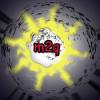Orion
-
Последна активност
-
- 1270 мнения
- 99309 прегледa
-
Какво е точното пресъздаване на особеностите на пространствено-времевите теории Специална и Обща теория на относителността посредством хиперизмерен (над-триизмерен) пространствен подход? Има ли място подобен подход по отношение на квантовата механика? 1 2 3 4 8
От Станислав Янков, in Теоретична Физика
- 184 мнения
- 4537 прегледa
-
- 298 мнения
- 14405 прегледa
-
- 67 мнения
- 1114 прегледa
-
- 207 мнения
- 14096 прегледa
-
-
Последно разглеждащи 0 Потребители
- No registered users viewing this page.




Препръчано мнение
Напиши мнение
Може да публикувате сега и да се регистрирате по-късно. Ако вече имате акаунт, влезте от ТУК , за да публикувате.